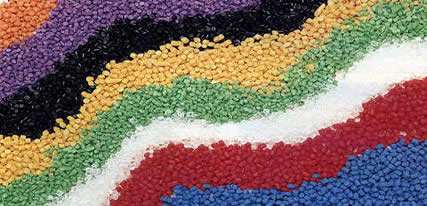What are the functional characteristics of engineering plastics
1. Light weight and low relative density
The relative density of engineering plastics is generally between 1.0~2.0, much lower than that of metals. It has light weight and can replace some traditional metal materials for aviation aircraft, vehicles and other fields.
2. High specific strength
Reinforced with glass fiber, carbon fiber and other fibers, the tensile strength can be greatly improved. The ratio of tensile strength to relative density is generally 1500-1700, even as high as 4000 (steel 1600, aluminum 1500). Tensile strength: refers to the stress that the material produces the maximum uniform plastic deformation. In the tensile test, the maximum tensile stress of the specimen until cracking is the tensile strength, and the results are indicated in MPa.
3. Excellent wear resistance and self-lubricating function
When engineering plastics are used as conflict parts, compared with wear-resistant metal alloys, the wear loss is less than 1:5, and fluoroplastics are better.
4. Excellent mechanical function
In a wide temperature range, many engineering plastics, especially reinforced engineering plastics, have excellent impact and fatigue resistance.

5. Excellent electrical insulation
Almost all engineering plastics have excellent electrical insulation and arc resistance, and can be among the excellent insulating materials
6. Chemical stability
It has good corrosion resistance to acid, alkali and general organic solvents.
7. Good standard stability of parts
8. High heat resistance
When ordinary engineering plastics are reinforced with different glass fibers, the temperature of ul for long-term continuous use exceeds 100 ℃, and the target of special engineering plastics generally exceeds 150 ℃.
9. Excellent shock absorption, noise elimination and sinking function for foreign matters
When engineering plastics are used as moving parts, they have no metal impact noise and have excellent shock absorption and noise elimination functions. In the presence of abrasive particles, foreign matters can be sunk, unlike metal which may be bitten or scratched before.
10. Outstanding processing function
Engineering plastics can be processed at low temperature (generally below 400 ℃) by injection molding, extrusion, blow molding and other methods. Products can be reprocessed by mechanical methods. The standard is stable, the interchangeability of products is strong, and the mold cost is low. Compared with metal processing, it can save about 50% of energy consumption, shorten working hours, and have a high product rate.
Source: Jiangmen engineering plastics http://www.wywantong.com/
-
04-13
PVC Engineering Plastics: how PVC plastic pipes are formed
The forming process of PVC plastic pipes should start from the raw materials of PVC plastic granules, which can be divided into soft PVC and hard PVC according to the added amount of stabilizer, plast
-
11-12
What is the filling property of Jiangmen engineering plastics
What is the filling property of Jiangmen engineering plasticsIn recent years, PC modified plastics have developed rapidly in China, and its industrial system is gradually established and improved. Th
-
10-08
Jiangmen Engineering Plastics: how to classify Jiangmen engineering plastics?
How to classify Jiangmen engineering plastics? 1. Classification by application characteristicsAccording to the different application characteristics of famous plastics, plastics are usually divided
-
08-30
Application scope of PBT engineering plastics
PBT engineering plastics are widely used in electronics, car industry, office machinery and other fields. In Japan and the developed countries in Europe, PBT engineering plastics are mainly used in t